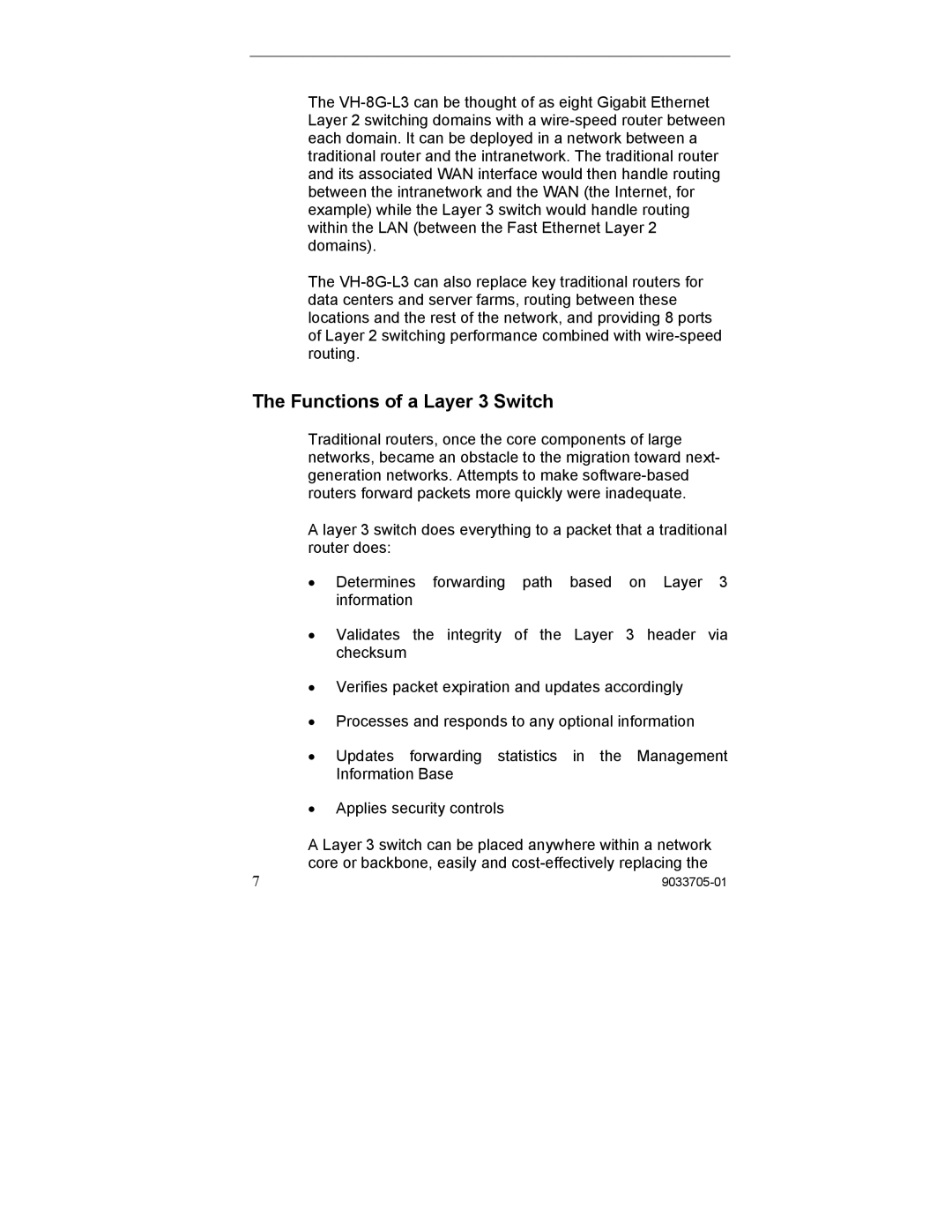VH-8G-L3 specifications
Enterasys Networks, a prominent player in the networking industry, has made significant advancements in network performance and management with its VH-8G-L3 switch. This high-performance Layer 3 switch is designed for enterprise environments, delivering powerful features that cater to both efficiency and connectivity.One of the main features of the VH-8G-L3 is its 10 Gigabit Ethernet capability. This switch supports high-speed connections, ensuring that data can be transmitted quickly and efficiently across the network. With eight 10 Gigabit Ethernet ports, the VH-8G-L3 is ideal for organizations looking to enhance their data throughput without compromising on reliability.
Another key characteristic of the VH-8G-L3 is its robust Layer 3 routing capabilities. This device can perform advanced routing functions, including static routing, RIP, OSPF, and VRRP. Such capabilities allow for better management of network traffic and improve overall performance by enabling efficient routing decisions based on real-time data.
In terms of technology, the Enterasys VH-8G-L3 boasts an innovative architecture that ensures high availability and redundancy. Features such as link aggregation and Spanning Tree Protocol contribute to seamless network operations. These technologies minimize downtime and provide a reliable infrastructure for businesses that depend on constant connectivity.
Furthermore, security is a paramount concern in today’s networking landscape, and the VH-8G-L3 addresses this with robust security features. The switch incorporates access control lists (ACLs) and VLAN support to create secure segments within the network, protecting sensitive data from unauthorized access.
Scalability is another critical attribute of the VH-8G-L3. As organizations grow and evolve, their network needs also change. This switch is designed to accommodate expanding infrastructures, making it easy to add additional switches and devices without extensive reconfiguration.
Lastly, the VH-8G-L3 is equipped with a user-friendly interface for simplified management and monitoring. The switch supports both a command-line interface and a web-based management platform, giving network administrators flexible options for configuration and oversight.
In summary, the Enterasys Networks VH-8G-L3 is a versatile and powerful Layer 3 switch that offers high-speed connectivity, advanced routing capabilities, robust security features, and scalability, making it an ideal choice for enterprises seeking to optimize their network performance.
